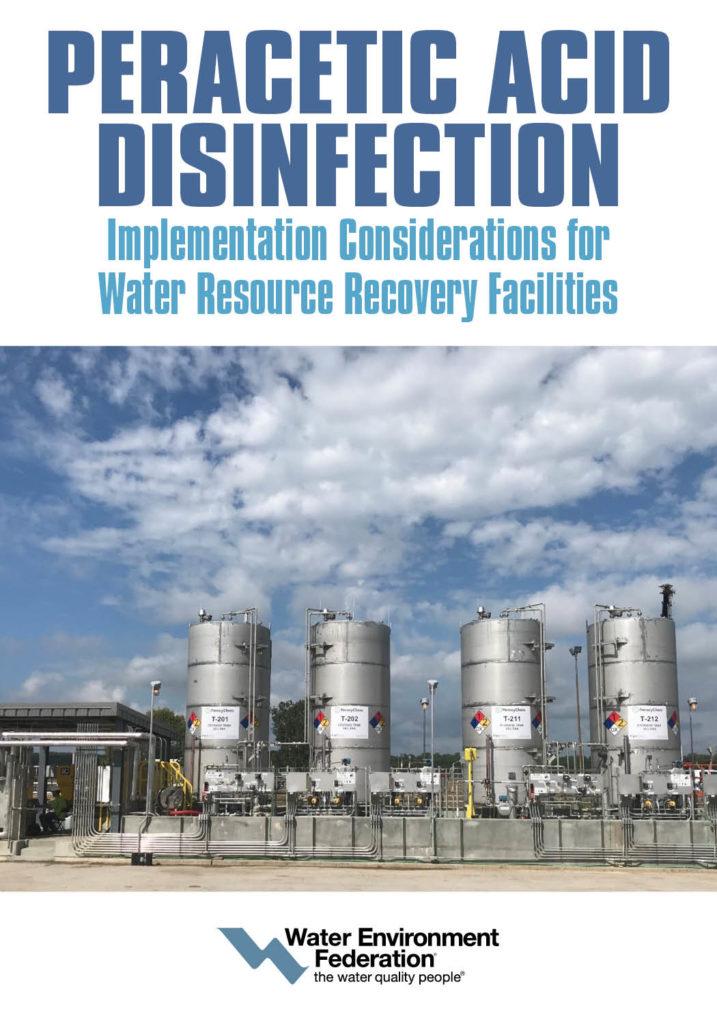Utilities have recognized the value of peracetic acid (PAA) as a wastewater and stormwater disinfectant for years, but limited education and design guidance have impeded its implementation.
Aiming to bridge the PAA knowledge gap, Peracetic Acid Disinfection: Implementation Considerations for Water Resource Recovery Facilities, a special publication from the Water Environment Federation (WEF; Alexandria, Virginia), is now available for pre-order. The guide aids disinfection professionals, water resource recovery facility designers, resource planners, and regulators as they evaluate and implement PAA disinfection technologies.
“Over the last decade, peracetic acid has gained significant traction for use as a wastewater and stormwater disinfection technology due to its efficacy, cost efficiency, ease-of-use, and lack of chlorinated disinfection by-product formation,” said Philip Block, co-author of the book and a member of the WEF PAA Task Force. “While numerous peer-reviewed publications exist on PAA and its use for disinfecting municipal wastewaters, there has not been a definitive, single-source guide for the wastewater professional.”
The new publication, currently available for pre-sale, provides a stepwise approach to PAA implementation, design, and regulation. Covered topics include:
Authored by a team of disinfection professionals, engineers, PAA manufacturers, regulators, facility owners, and operators with direct PAA project experience, this publication provides much-needed education on evaluating and implementing this technology. Its contents offer practical knowledge through case study examples of both small and large facilities to assist personnel with design, implementation, and day-to-day operations.
To see the original post and access all the links, please CLICK HERE